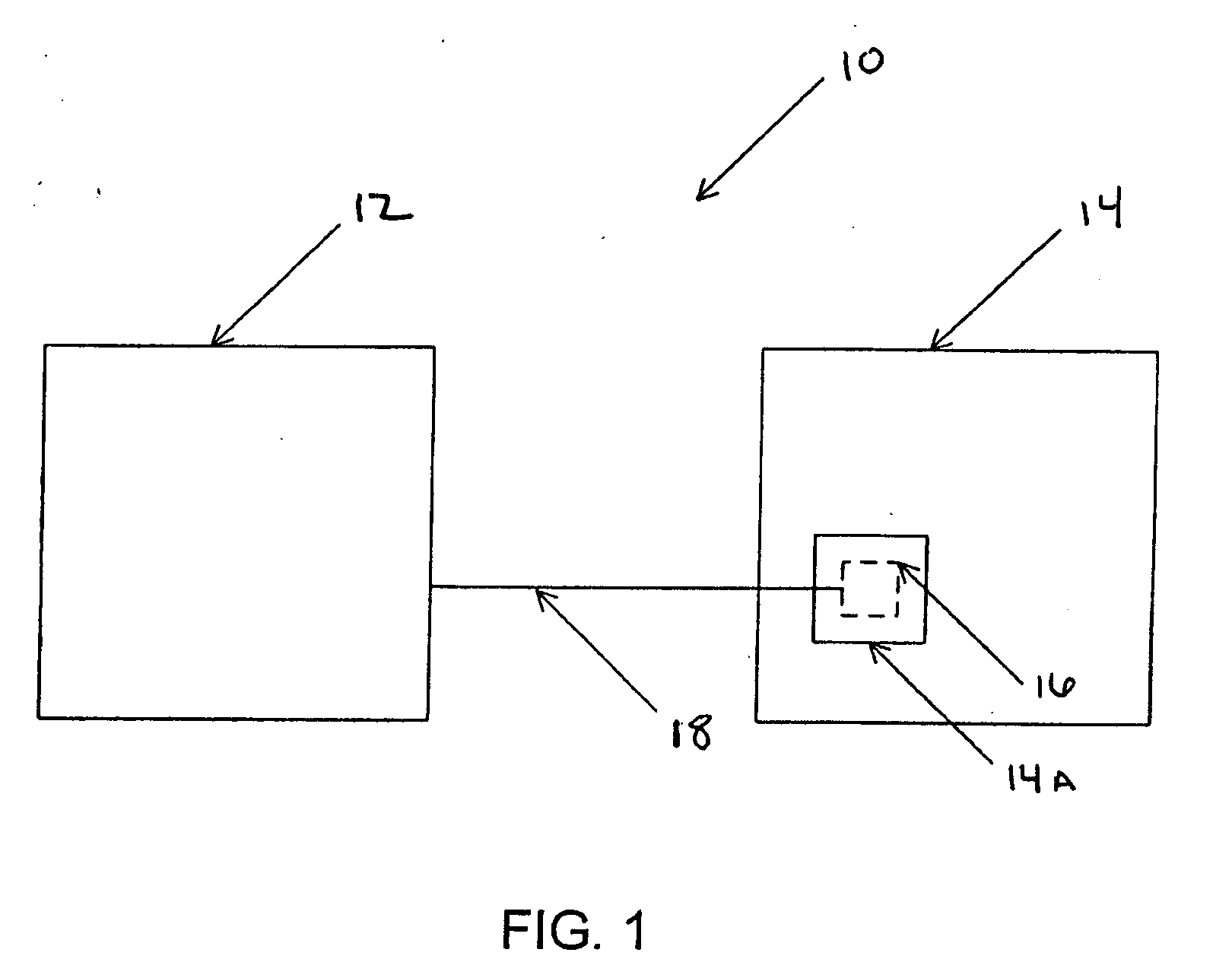Fluid evacuator system
a technology of evacuator and discharge pipe, which is applied in the field of discharge pipe system, can solve the problems of clogging of exit port, entry or exit port, drain, etc., and the diameter of the exit port passage is typically 3 millimeters or less
- Summary
- Abstract
- Description
- Claims
- Application Information
AI Technical Summary
Benefits of technology
Problems solved by technology
Method used
Image
Examples
Embodiment Construction
[0022] Reference will now be made to the exemplary embodiments of the invention, which are illustrated in the accompanying drawings.
[0023] Referring to FIG. 1, an evacuator system 10 is shown for treatment of a patient 14 having a wound (or wound site) 14A. System 10 includes a fluid container 12, and may further include a drain 16 and a conduit 18. Drain 16 is shown in dashed lines to signify that it may be covered by surgical closure of wound site 14A, preferably, but not necessarily, creating an airtight seal for drain 16 within wound site 14A. Conduit 18 may be connected to drain 16 before wound site 14A is closed, so conduit 18 may extend outside wound site 14A and be connected to fluid container 12.
[0024] Drain 16 receives body fluid from patient 14. Any structure suitable for this purpose may be employed. In one embodiment, drain 16 may comprise a drain with a lumen having a diameter above 3 millimeters, such as the drain available from J.S. Vascular of Scottsdale, Ariz. an...
PUM
 Login to View More
Login to View More Abstract
Description
Claims
Application Information
 Login to View More
Login to View More - R&D
- Intellectual Property
- Life Sciences
- Materials
- Tech Scout
- Unparalleled Data Quality
- Higher Quality Content
- 60% Fewer Hallucinations
Browse by: Latest US Patents, China's latest patents, Technical Efficacy Thesaurus, Application Domain, Technology Topic, Popular Technical Reports.
© 2025 PatSnap. All rights reserved.Legal|Privacy policy|Modern Slavery Act Transparency Statement|Sitemap|About US| Contact US: help@patsnap.com



